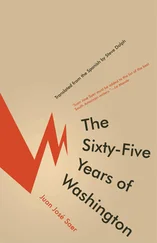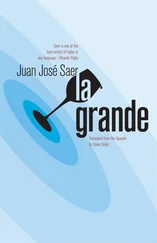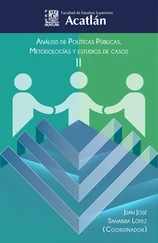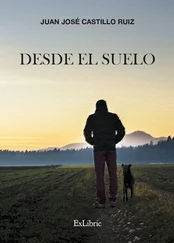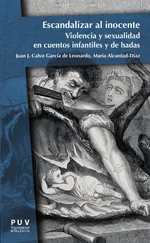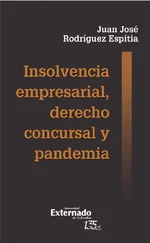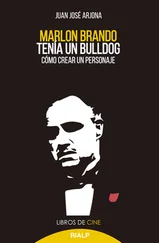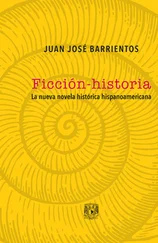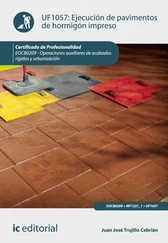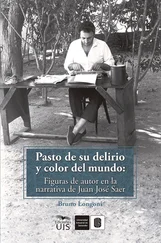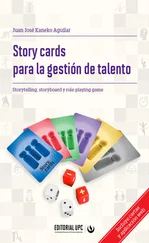Juan José Saer - Scars
Здесь есть возможность читать онлайн «Juan José Saer - Scars» весь текст электронной книги совершенно бесплатно (целиком полную версию без сокращений). В некоторых случаях можно слушать аудио, скачать через торрент в формате fb2 и присутствует краткое содержание. Год выпуска: 2011, Издательство: Open Letter, Жанр: Современная проза, на английском языке. Описание произведения, (предисловие) а так же отзывы посетителей доступны на портале библиотеки ЛибКат.
- Название:Scars
- Автор:
- Издательство:Open Letter
- Жанр:
- Год:2011
- ISBN:нет данных
- Рейтинг книги:5 / 5. Голосов: 1
-
Избранное:Добавить в избранное
- Отзывы:
-
Ваша оценка:
- 100
- 1
- 2
- 3
- 4
- 5
Scars: краткое содержание, описание и аннотация
Предлагаем к чтению аннотацию, описание, краткое содержание или предисловие (зависит от того, что написал сам автор книги «Scars»). Если вы не нашли необходимую информацию о книге — напишите в комментариях, мы постараемся отыскать её.
explores a crime committed by a laborer who shot his wife in the face; or, rather, it explores the circumstances of four characters who have some connection to the crime. Each of the stories in Scars explores a fragment in time when the lives of these characters are altered, more or less, by a singular event.
Scars — читать онлайн бесплатно полную книгу (весь текст) целиком
Ниже представлен текст книги, разбитый по страницам. Система сохранения места последней прочитанной страницы, позволяет с удобством читать онлайн бесплатно книгу «Scars», без необходимости каждый раз заново искать на чём Вы остановились. Поставьте закладку, и сможете в любой момент перейти на страницу, на которой закончили чтение.
Интервал:
Закладка:
Through the window I see the blue sky. It rains. A blue penumbra covers the trees in the park, and behind them, through the foliage, the lake is still and blue, but near-black and murky. Two indistinct figures — a female and a male gorilla, surely — walk slowly between the trees, toward the lake. I scratch my head. The telephone rings and I pick it up. It’s the same voice as always, high-pitched, like a puppet, pouring out its long, rapid string of insults. It calls me a thief, a slut, a lowlife. It says I’ll get what’s coming to me soon enough. I listen impassively until it finishes, and when I sense that it has hung up, I hang up too. Then I pour myself a whiskey, neat, and take a sip.
I put on the raincoat and the waterproof hat and go out. I descend the stairs quietly. At the door I stop for a moment, look down the empty street toward the park, and then I get in the car. It’s been getting rained on all day and the windshield is soaked. Through it I can only make out a shapeless, blue penumbra, where a few jagged lights glimmer at a distance. I wait a moment, in the silence, before turning the key. The engine hesitates two or three times before finally turning over. I turn on the windshield wipers and wait for the rain to clear before moving. As they sweep the water from the windshield, the wiper blades reveal the curve of San Martín to the south and the trees beyond that seem to intersect the street where the curve of the park follows of the curve of the blue pavement. I turn on the headlights and they pierce the bluish penumbra. A pair of young gorillas is coming up the sidewalk toward me, arm in arm. They blink at the headlights. I wait for them to pass the car, and then I start moving, but so slowly that it takes me a long time to reach the first corner, where I turn right. The rough cobblestones make the car’s frame shudder. At the next corner I turn right again, onto the smooth asphalt of San Gerónimo to the north. At the third corner I come out on the Plaza de Mayo. I go on, the plaza to my right and the courthouse, where no lights are visible, to my left. I cross the intersection with the Avenida del Sur and turn right at the next corner, then I drive one block and turn left onto San Martín to the north.
I cross the Avenida del Sur, and at the next corner I turn right, then drive one block and turn left onto San Martín to the north. Ahead I can make out the neon signs on San Martín, growing more varied and dense. Their lights — green, pink, yellow, and blue — tarnish the night sky, nearly black by now. The streetlights are also lit up, and the shop windows are brightly illuminated. The lobby of the municipal theater is lit up, but I don’t see anyone inside. Suddenly, the rain thickens. Through the windshield the street becomes a luminous blot, a blot that takes on a clear but unstable form momentarily, and then returns to the luminous blot, where the colors blend violently. I go slowly, at the end of a long line of cars. Another line advances slowly in the opposite direction. After I pass the illuminated corridors of the arcade, the downpour of thick rain returns to the barely perceptible mist of days and days. I drive two blocks, slowly, following the slow line of cars ahead, and then I turn right, leaving San Martín. At the Banco Provincial I cross 25 de Mayo and continue east. I turn onto the harbor road, where the rough cobblestones make the car frame shudder, and drive the length of it and reach the mouth of the suspension bridge. A weak light filters out from the gray sentry box. I turn onto the boulevard, to the west. I cross the tracks and then pass the facade of the train station — the lobby is illuminated — stop at the first traffic light, start up when the light changes, around the Adoratrices convent, briefly catch sight of the mill before crossing the tracks again at the second light, then drive two more blocks and turn again onto San Martín, to the south. As I approach the city center I fall into a long line of cars that moves more and more slowly. Then I pass the La Región building, where the only visible lights are from the news ticker, and farther on the brightly lit passageways of the arcade, now to my left, the lobby filling up with gorillas, pomaded and dressed in dark clothing, and female gorillas covered in jewelry and dressed festively, and then finally the Plaza de Mayo, circling on its east side. The city hall building approaches, and through the right side windows, between the foliage in the plaza, appears the dark mass of the courthouse. City hall is left behind. I cross the first intersection, and the second, and finally stop the car halfway down the block, in front of the house. The trees are dark. I step out of the car and close the door, and I can feel the rain falling on my face and on my hat. Over the roof of the car, through the trees, I see the water on the lake shine momentarily and darken again. I make an effort to keep my shoes clean, tiptoeing across the sidewalk and into the house. I lock the door and start up the stairs.
Elvira is in the dining room. “Will you eat now?” she says. I tell her to leave something out, that for now I’m not hungry. Elvira disappears into the kitchen. “Bring some ice to the study,” I say. I hang up the raincoat and the hat on the rack in the bathroom, urinate, and go into the study. The curtains are open, so I close them again. Now the only light, a bright circle, comes from the desk. I pick up the briefcase from the sofa, take out the dictionary, the notebook, the novel, and the pens, and put them on the desk. I drop the empty briefcase on the sofa, pour myself a large whiskey, and sit down at the desk, glass in hand. I take a short drink. Then I open the notebook to the first page and study the black handwriting of the manuscript, which is full of strikethroughs and markups in various colors, green, red, blue. Elvira knocks at the door and then comes in with the ice bucket. “I left you some sandwiches in the kitchen,” she says. I ask if she has gone shopping for tomorrow, and she says she has. Then she says goodnight and disappears. I put ice in the whiskey and take a slow drink after swirling the glass, making it clink. Then I leave the glass to my right on the desk, within reach, and open the novel to the first page — it’s covered in marks in three or four colors. I read from the notebook. The first word, in capital letters in the center of the page, reads PREFACIO. Below this is a line in regular script. It reads, El artista es el creador de cosas bellas . The word El is in parentheses. I pause a moment and then pick up a red pen and cross out the word El , then superimpose an uppercase A over the lowercase a of the word artista . I’m left with, Artista es el creador de cosas bellas . The second line reads, Revelar el arte y ocultar el artista es el fin (propósito) (finalidad) del arte . I pause a moment and then cross out the word fin , to avoid any sort of misinterpretation.
I cross out and correct, line after line, in various colors, green, blue, red, over the black handwriting. The marks, crosses, circles, lines, and arrows are superimposed on the marks made during the first draft. At ten after twelve I get up from the desk, take a last sip of whiskey, and go to bed. I undress slowly and put on my pajamas. The sheets are warm, and the light on the nightstand casts a long cone over the white wall. I cover myself to my chin with the sheets and stare at the ceiling. Then I stretch out my hand, keeping the rest of my body still, and turn off the light. It doesn’t start right away. The common thoughts come first, the memories, the pieces of visual or auditory sensation lingering on the retina or the ear drum, the slow, weak murmur, growing more confused, the vast diurnal sound extinguishing. Then the actual murmur begins. For an immeasurable period it blends with the previous sound. The combination of the two is disorienting. At this hour the gorillas begin to undress and slither toward bed. The female gorillas wait, their legs open like enormous carnivorous flowers, their eyes half shut and their hands open on the pillow, palms up alongside their faces. I’m in complete darkness, hearing the two murmurs blending. The real murmur will start to grow, while the other is extinguished, until it completely takes over the inside of my mind. Phosphorescent blurs will rise from the murmur, then pale, then phosphorescent again, until figures will begin to take shape around the murmur, momentarily focused in the dark camera. Fragments of the faces of long-dead gorillas, their furry hands, a meteorite, incandescent and expanding as it falls to the earth through the darkness. But the external murmur remains, extinguishing gradually. The wiper blades sweep rhythmically across the surface of the glass where the drops fall, and myriad brilliant lights decompose into violent shapes, while through the side windows the blurred facades of houses — repeated blurs, yellow, gray, white — slide slowly backward. Dark windows, pale faces. Newspapers in the street, trampled, covered in mud. An empty package of cigarettes, twisted, the silver rim of the inner wrapper sticking out. Dead leaves piled up into a damp blanket under the trees. Coins stacked on the night stand, a glass of water holding a teaspoon. Stacks of thick, dusty files in the courthouse offices, yellowed at the edges, with faded red covers, on the desks or in file cabinets, piled to the ceiling. The gray sentry box at the mouth of the suspension bridge, empty, glowing in the fog. Silent umbrellas, in every color, sliding rigidly, horizontally, in every direction. The solitary train station building, the illuminated lobby. A gorilla wrapped in a blue raincoat, coughing and then disappearing behind me. The green traffic light coming on. The tracks extending, crossing the street. The landscape, still, moving, still, the orange trees and the palms in the Plaza de Mayo receiving the ceaseless rain and glowing momentarily in the darkness.
Читать дальшеИнтервал:
Закладка:
Похожие книги на «Scars»
Представляем Вашему вниманию похожие книги на «Scars» списком для выбора. Мы отобрали схожую по названию и смыслу литературу в надежде предоставить читателям больше вариантов отыскать новые, интересные, ещё непрочитанные произведения.
Обсуждение, отзывы о книге «Scars» и просто собственные мнения читателей. Оставьте ваши комментарии, напишите, что Вы думаете о произведении, его смысле или главных героях. Укажите что конкретно понравилось, а что нет, и почему Вы так считаете.

